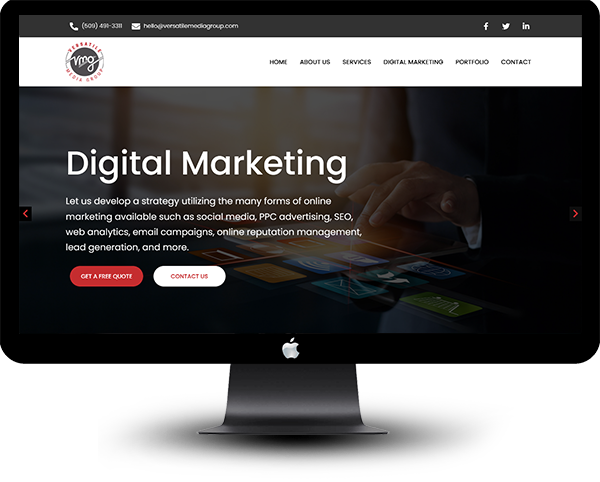

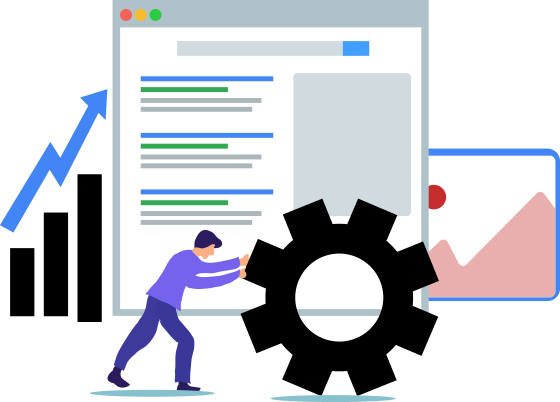
We at Versatile Media Groupwill help you and your business to stay focused, providing expert SEO services that will drive higher conversation rates, greater visibility and ultimately, deliver outstanding results.We aim to bring your business to top search results working according to Google’s latest algorithms
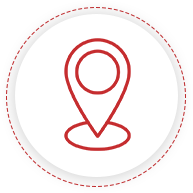
Any business that servers a specific geographical area should utilize local SEO best practices so that people nearby find you easily.

Big brands and eCommerce websites need to compete for search rankings across the country with a strong SEO strategy so national SEO focuses primarily on ranking for broad keyword terms rather than ranking for specific geographical terms.

If your products or services reach a global audience then International SEO is a must. It’s the process of optimizing your website so that search engines identify which countries you want to reach and cover multiple languages.`
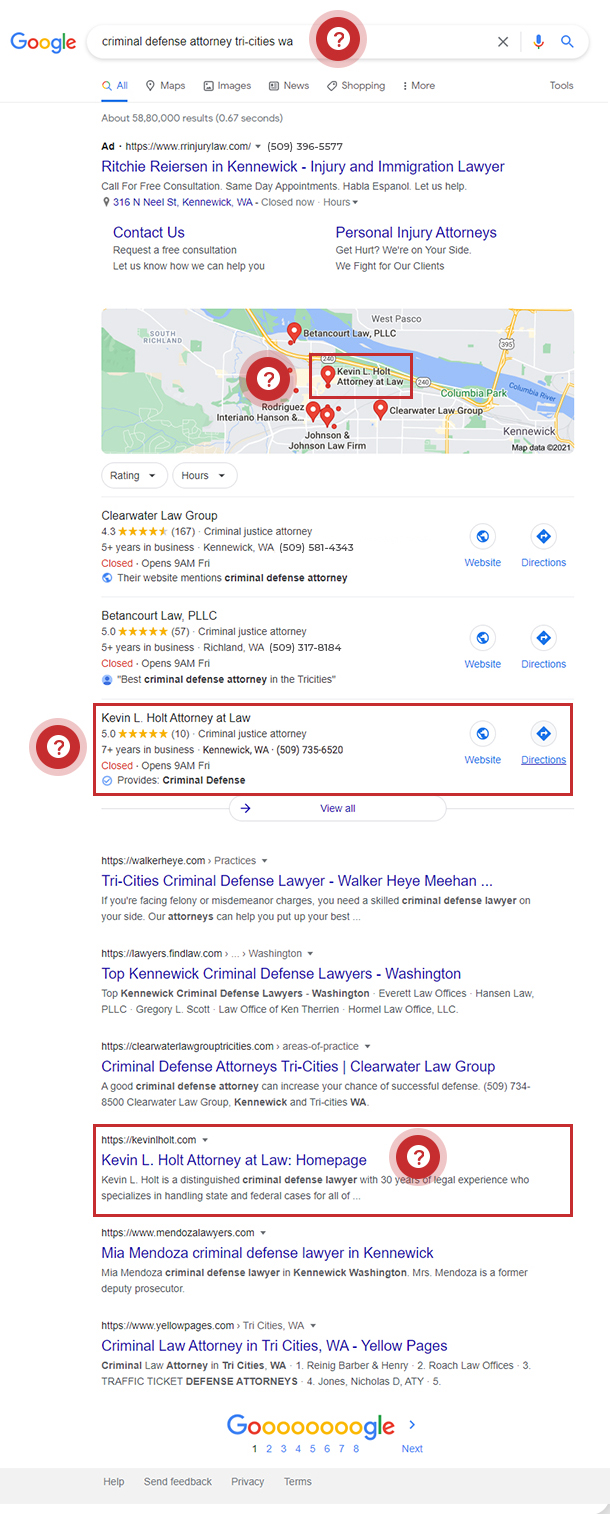
Search engine optimization is short for search engine optimization. Search engine optimization refers to the process of getting your website’s pages placed at the top of organic search results. By optimizing web pages, users can find the information they’re looking for on the internet by typing keywords into a search engine.
SEO pros commonly refer to Google when discussing search engines in general. Google has the world’s most complex algorithm and is the most popular search engine. As this article proceeds, we will discuss Google’s “wants”, which can seem quite detailed and complex. However, one rule about SEO must be kept in mind: Google wants to provide as good an experience as possible for their end-users. It’s not about gaming the system when it comes to SEO. It’s about delivering value. You need a website that’s worth visiting if you want people to visit your website.
Any business that wishes to attract visitors to its website needs search engine optimization. Search engines generate 93% of all web traffic. Your website should make use of SEO efforts no matter what type of business you run. With the right SEO strategists, content writers, designers, developers, and data analysts on your team, you can probably do all of your SEO on-site. While it may be possible for some businesses to handle their SEO, most are unable to do so. Our role is to help with that.
In addition to SEO, Versatile Media Group, LLC offers a wide variety of digital marketing services. As SEO experts, we tailor our work to fit our clients’ needs. Our track record speaks for itself.
From the basics to more advanced details, you’ll learn a lot about SEO in this article.
search term typed into a search engine
A page that shows search engine results after you enter a keyword, sometimes called a search engine results page.
Where a page appears in the SERPs. Listed in order of appearance: #1, #2, etc.
A search engine results page usually displays two types of links: paid advertisements and organic results.
The top of the search results is marked as ads that contain paid ads. Pay-per-click (PPC) ads are purchased by businesses. There are fewer clicks for organic listings, but those clicks lead to more purchases. VMG can help you launch PPC campaigns for your business if you want. We offer top-quality PPC services. Learn more.
There are still organic listings to be found. Search engine rank is directly affected by SEO efforts. Inorganic listings, there are different types based on what the search engine is looking for. Search results provided by Google are designed to serve the user’s needs.
A localized search usually returns map packs. Searching for lunch, for instance, will cause Google to suggest nearby restaurants based on what you searched.
Searches with clear, simple answers will display featured snippets. The "snippet", which shows the text of the answer Google finds on the page, saves the user from having to click into the site. Despite appearing in featured snippets, websites get more traffic than they would if they were listed in traditional listings.

Google results include a question box which is a new addition to search results headed "People also ask" that provides answers to related questions.
With specific keywords, images and videos naturally dominate. It is often more effective to watch a YouTube video to answer the question of "how to tie a tie" rather than to read a step-by-step guide.
Keyword research is the foundation of most SEO strategies. Keyword value can be determined by using Google Ads, SEMrush, and other tools. Various measures of search volume and cost per click (CPC) are available. The former is based on historic PPC bidding and tells you how much money each click brings. The latter measures the amount of revenue each click brings.
In the example of “Mariners roster,” the keyword does not have a CPC since the user is looking for the team’s roster. After receiving the information, the user leaves. When users land on a website to look for Mariners tickets, the CPC will be much higher since they are more likely to buy tickets.
It is important to decide on keywords before creating and optimizing a set of pages. Make sure you select a few secondary keywords to flesh out a topic on your page instead of just one primary keyword. Search engines evaluate pages based on how closely related their keywords are to other search queries.
Don’t fall into the trap of always using the most valuable keywords. Realistic expectations are a good idea. No matter how hard you try, you will not rank first for the keyword “baseball” if you sell vintage baseball cards. If a consumer electronics company wants to rank for “best cell phone,” a Google search shows most of the results are the list of cell phone reviews rather than individual product pages. Don’t ask, “Which terms should we rank for?” You should ask, “What is the best term that we should rank for?” instead.”

The content of your pages can be created once you have determined which keywords you want to target. According to outdated SEO guidelines, your content should contain as many keywords as possible. It was a successful strategy in the past when search engines were less sophisticated. The search engines such as Google and Bing no longer fall for that. The practice of “keyword stuffing” is useless. This is called “tricking the search engine.” Please do not attempt to trick Google. According to this guideline, the user’s query must be satisfied.
The following elements constitute the main content of an on-page:
URL : the address of a web page
Meta title : the title of the page you see in search results and a tab at the top of your browser
Meta description : a brief description of a website, usually 160 characters or less, which appears beneath the link in search results
H1 Heading : The title that appears on the page, typically in a large, bold font
Body content : a webpage’s main contents, such as words, images, buttons, and purchasing forms
Other headings : The number of headings to separate content on the page is given in H2, H3, H4, etc., typically concerning their size and purpose. These are useful for long pages with in-depth information on a certain topic.
Many content writers find it difficult to write SEO-friendly content. Websites should use natural language to reach their target audience, according to Google. If you wish to include your keywords easily, place them in URLs, meta titles, meta descriptions, H1 headings, and body content, but don’t overdo it. Don’t jam secondary keywords into content that doesn’t need them. It is still important to satisfy the query even with secondary keywords.


It is important to organize websites so that they are both user-friendly and search engine-friendly. If you manage a website, you want users to be able to navigate the site using navigation links at the top of the pages, as well as hyperlinks in the content. It is important to place links logically and use text that is easy to read. Your SEO efforts will probably be aided by links that contain relevant keywords for the link’s destination. Consider an empty page with only the links left on it as a helpful guideline. Does the user know the destination of each link without context?
Similarly, your URLs should be nicely formatted. In the URL structure of most websites, categories are used, such as:
www.yourwebsite.com/
www.yourwebsite.com/name-of-category/
www.yourwebsite.com/name-of-category/topic-of-page/
For a site to be organized effectively, it must be planned. Decide what information and products you will provide. The majority of eCommerce sites are large and have many categories. Structure your URLs based on the search intent, the user experience, and the keyword strategy.
In SEO, backlinks refer to links that go from other sites to yours. Backlinks are often called “external links” or “off-page SEO.”. In the online world, backlinks are a huge indicator for Google of the value of your site and its reputation. References from other sites that direct users to your site indicate that you have a good site. In addition to its SEO services, VMG also provides link-building campaigns. Find out how to build links for SEO.
Search engine optimization professionals look at all the backlinks your site has using tools such as Ahrefs or Majestic. Each link has a different value. You will improve your search engine ranking significantly more if you link to authoritative, high-traffic websites. To calculate the total value of your backlink profile, you can use metrics like “trust flow” and “citation flow”.
Backlinks have been dramatically improved by Google over the past ten years. A website that has its links placed on “link farms” has been successfully “gaming the system” in more primitive times. This black hat SEO tactic is easily detected by Google these days, and the search engine will likely penalize your site, which is devastating to your rankings.

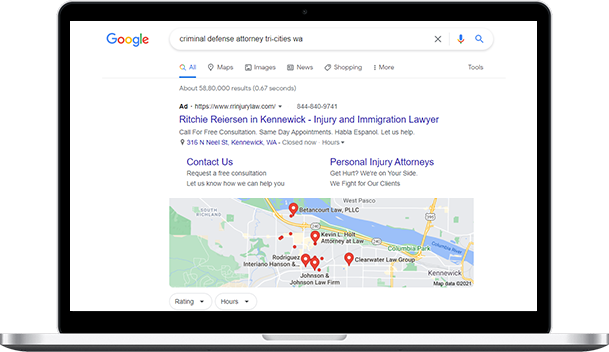
A few additional steps need to be taken for local businesses. Whenever you search for something like "salon" or "shoe store", you usually get search results for businesses in your area, which provide information like address, phone number, business hours, and driving directions.
Local SEO entails making sure that your business is listed on aggregation sites and social media platforms, as well as creating a Google My Business profile. Your business can appear higher on search engine results when it has positive reviews. Make sure your information is consistent, like your hours and location. Users and search engines can find your business by looking at the website's localized keywords. Local SEO is something VMG has been able to help thousands of businesses with. Find out more about local SEO on our page about local SEO.

In technical SEO, the goal is to make sure users and search engines can easily find what they’re looking for. This is a list of some technical SEO components:
Page speed : It is important that your website loads quickly. A slow load time can be caused by unnecessary code and large images. Web developers and SEO pros cooperate closely to make sure pages load quickly.
Mobile-friendliness : Mobile and tablet users should be able to access your website just as easily as desktop users.
Duplicate content :Unique content should be on every page. Search engines are confused if you have pages with the same title, for instance. A surprising number of meta titles and H1s duplicate each other.
Broken links : The user experience is degraded in search engines whenever a link is clicked but not followed. Technical audits should identify 301 redirects and missed links on your site.

Businesses don’t know how well SEO is working, which is one of the most common problems they face. When business owners see changes in traffic, revenue, leads, products sold, or new walk-in customers, they are prone to making the wrong assumptions. You should know exactly what you should track in SEO if you are serious about it.
An excellent SEO tool for beginners is SEMrush. In addition to its many features, SEMrush allows you to track the rank of each keyword in your campaign. Select the keywords you want to target and add them to your tracking before you create or update a page. Checking your ranking daily, weekly, or monthly, depending on the website, will yield different results.
Some of the keywords you targeted may not drive traffic to the site. It shows impressions and clicks for individual keywords in Google Search Console. You should track keywords that drive significant traffic going forward if you find them.
Knowing how much of your overall traffic originates from search engine optimization is important in a broader sense. People can find the site via direct traffic or referral traffic, such as by typing in the URL or using bookmarks (direct traffic), or by clicking a link from another website, an email, or a social media app (referral traffic). Furthermore, it's useful to know what percentage of traffic is on desktops and mobile devices. SEO and digital marketing strategies can be informed by web analytics tools like Google Analytics and WebTrends that segment traffic and do so much more.
These are basic SEO tracking and site traffic tips. We provide marketing analytics services if your site needs tracking.

Approximately how long does SEO take to produce results?
Does the design of a page affect SEO?
Are HTTPS and HTTP the same thing?
How is black hat SEO defined?
How does a manual penalty work? When my site is penalized, what do I need to do?
What is the frequency of Google's algorithm updates?

Google's crawl budget determines how much crawling your website will receive. All pages of your website should be crawled by Google. Insufficient crawling can be caused by a sloppy organization, too many 301 redirects, broken links, or improper no-indexing. A huge percentage of websites that have undergone wholesale changes over time are affected by this.

The default option for marking a webpage as "index" is to allow Google to crawl the page and show it in search results. It is recommended that pages that should not be indexed by search engines, such as confirmation pages, signup forms, and purchasing funnels, be 'no-indexed.' There are standard practices for indexing the first page, and not indexing the subsequent pages when there is an archive of links on subsequent pages.

Google follows links by default, which means that it wants to find the page on the other end when you link to it. You pass on some authority when you create a link, also known as "link juice." Nofollow links are those that you don't want to pass authority to or those that you won't crawl. A no-follow link is typically an advertisement or a link that leads to a monetization page. A no-follow link might also be found in a press release.

A website's canonical tags serve to indicate to which version of the page is "preferred.". You may have several versions of the same page, for instance, on a content-heavy site, and a canonical tag can be applied to the one you prefer. Using the canonical tag, you can place the URL of the main product page at the top of the separate product pages for different sizes and colour.

Redirecting users from one URL to another is what is known as 301 redirects. The best practice is to delete a page and redirect its URL to another page that matches the user's intent in visiting the old page. Ask yourself, "Will the page that we're sending them satisfy the people looking for the original page?"When redirecting a page, make sure to update the links to the old page as well.

When a user is searching for a URL that does not exist, they will see a 404 error. Your site should be taken down if you have deleted pages. The user experience is impaired when your site redirects to an inactive page. Many websites create 404 pages that are humorous and include helpful links to try to maintain users and redirect them to another part of the site.

Schema.org offers structured data, which is also known as "Schema," as an optional coding solution. It serves as a valuable tool for search engines about your page, hidden from users. The recent changes to Google's algorithm increased the weight given to Schema markup.

It is considered duplicate content when it is taken verbatim or in a similar fashion from another source. Black hat SEO is considered to be unethical. Citing the source and using a canonical tag to give credit to the source have the same effect as citing sources to avoid plagiarism.

To gauge the value of a webpage, SEO professionals look at user behaviourmetrics. These include time spent on a page, time spent on site, and bounce rate (how often users leave a page without clicking through). To measure user satisfaction with its search results, Google analyzes user behaviour metrics. In the words of a pro, "Google is watching."